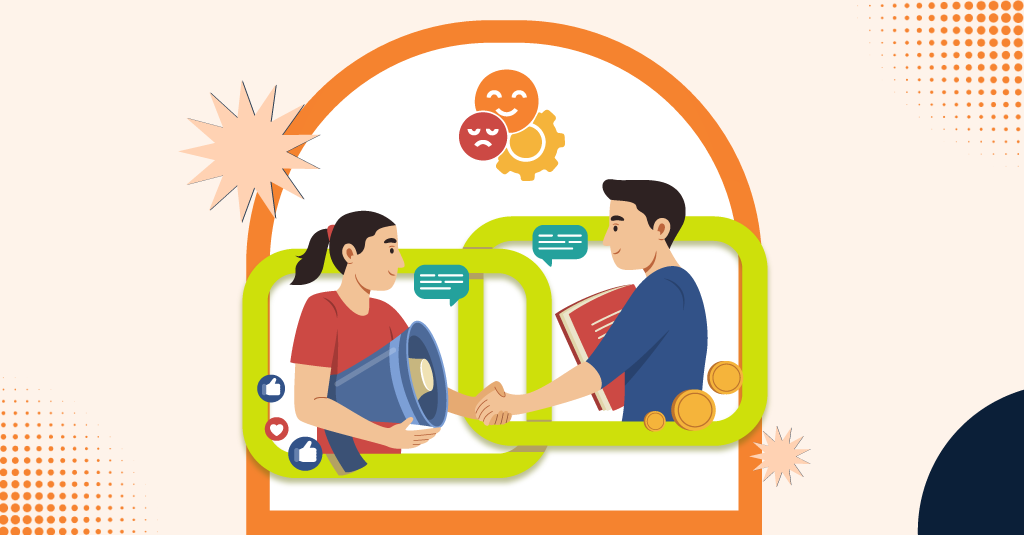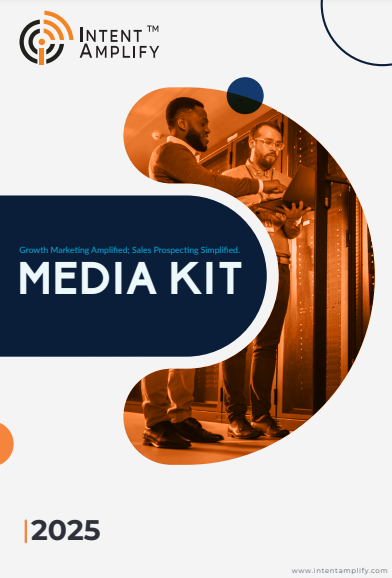
Empathy-Driven Marketing: How to Connect Emotionally When Selling Intangible Services
- Last updated on: June 24, 2025
In an automation-first world where consumers are overwhelmed with noise, jargon, and automation, empathy is becoming a fundamental differentiator, particularly in markets that sell intangible services such as consulting, SaaS, cloud, or financial services. Empathy-Driven Marketing (EDM) transcends customer-centricity; it humanizes the buying process by connecting marketing messaging with how your customers feel, not merely what they require.
For service-based companies, where there may be no physical product to present, empathy becomes the link between perception and value. Being able to emotionally connect during the buyer’s decision journey affects both trust and purchase intent. In 2025, selling without empathy is not a choice; it’s a risk.
The Science Behind Empathy in B2B Decision Making
B2B buyers might wear corporate badges, but their decision-making is inherently human. A Gartner study found that B2B buyers are 50% more likely to buy from a brand when they see personal value—emotional benefits like confidence, pride, and reduced anxiety.
When you’re selling intangible services, these emotional hooks are more important than price or features. It’s because services are experiential and trust-based. You’re not selling a plan or a platform; you’re selling results, simplicity, peace of mind, and expansion. Neuroscience confirms this: the emotional brain processes sensory information 5x faster than the rational brain, so first impressions—and emotions—form the whole perception.
Why Empathy-Driven Marketing Matters More for Intangible Services
Physical goods can be shown, tried, and exchanged. Services, though, depend on trust based on perception, which can’t be physically assessed before being bought. That’s why the emotional bond becomes the focal point of your marketing plan.
Empathy marketing provides the means to:
- Tackle the buyer’s implicit fears (e.g., implementation risk, uncertainty regarding ROI)
- Establish emotional security through demonstration of industry-specific knowledge
- Eliminate the complexity hurdle by using the customer’s language, not yours
- Turn testimonials from mere flattery into emotionally engaging stories
By addressing customers where they’re at—emotionally, rather than strategically—service sellers can minimize friction and increase involvement in high-stakes purchase decisions.
Step One: Listening Intensely to Your Buyers’ Emotional Signals
Real empathy begins with listening, not pitching. While most marketing teams use demographics and firmographics, empathy brands dig deeper. They dig for psychographics: emotional drivers, internal resistance points, and cultural backdrops.
Utilize these empathy tools:
- Voice of the Customer (VoC) interviews: Not only “what do you want?” but “what concerns you?”
- Customer advisory boards: Have long-term customers describe intangible issues your messaging is not capturing.
- Social listening: Keep an ear on platforms such as LinkedIn, Reddit, and Quora for unfiltered, off-the-cuff mentions of your service space.
One great exercise is empathy mapping, where you map what your customer says, thinks, feels, and does at important decision moments. This map serves as your emotional navigation tool, informing copy, tone, imagery, and even call-to-action language.
Step Two: Emotional Storytelling That Shows, Not Tells
B2B storytelling tends to be clinical and outcome-focused. Empathy-based storytelling reverses that. It begins with emotional pertinence rather than going into results first. For instance, instead of “Our SaaS lowers churn by 28%,” make it “Our customers no longer wake up fearing Monday metrics calls because they know that their churn dashboard is always three steps ahead.”
This story approach:
- Transitions from value propositions to emotional trajectories
- Highlights client issues in a manner that makes your buyer feel understood
- Positions your solution as an ally, rather than a hero
As storytelling mirrors the buyer’s inner monologue, credibility grows quickly. In webinars, case studies, or email nurturing campaigns, the aim is emotional connection, rather than brand awareness.
Step Three: Content That Heals, Not Just Informs
Content is no longer plentiful. Relevance with care is what’s limited. Service business content marketing needs to shift from transactional (specs, whitepapers) to transformational (mindset-changing, fear-reducing). Here’s how you do it:
- Swap “here’s what we do” with “here’s how you’ll feel after working with us.”
- Use customer testimonials that are emotion-based, not outcome-based
- Put human context around data. A metric like “60% CX improvement” is impactful when combined with a quote: “Our customers finally feel understood.”
In 2025, service buyers don’t crave more PDFs—they crave emotional transparency. They need to feel like you understand them before they share their time or information. Even in ABM marketing, the most clicked-on assets aren’t necessarily the most technical—rather, they’re the most human.
Step Four: Aligning Empathetic Messaging Throughout the Funnel
Empathy marketing breaks down when just the top-of-funnel is human, yet the rest of it becomes robotic. Intangible service sellers need to chart emotional continuity throughout each stage:
Top-of-Funnel (TOFU): Employ emotional hooks. Begin with hopes and challenges, not product names. Example: “What if your compliance audits no longer caused fire drills?”
Middle-of-Funnel (MOFU): Reinstate emotional benefits connected to trust. Offer materials that assuage fear, such as clear onboarding schedules, behind-the-scenes footage, and honest talk of typical faux pas.
Bottom-of-Funnel (BOFU): Reassure. Don’t simply ask for the sale. Demonstrate emotional preparedness: “Here’s what our clients say the first week after beginning with us.”
Marketing automation tools can scale empathy through behavior-triggered personalization. However, don’t automate tone—empathy still needs to feel human at each touchpoint.
Step Five: Training Teams for Emotional Intelligence (EQ) at Scale
Empathy is not a campaign—it’s a cultural muscle. Marketers need to be trained to hear nuance, not analytics alone. This involves:
- Reading between the lines of buyer feedback
- Identifying emotional fatigue in lead drop-off
- Writing with sensitivity to industry stressors (e.g., healthcare burnout, IT overload)
Buyer psychology workshops, co-operative feedback loops with customer success, and empathy role-play exercises can assist in bringing internal teams into alignment. One of the underrated strategies is engaging your front-line service teams in content generation. Their experiences provide unprecedented emotional precision and assist in enforcing brand continuity across functions.
Empathy Metrics: Quantifying Emotional Engagement
You can’t fix what you don’t measure. Though empathy is intangible, its effect isn’t. Employ these metrics to gauge:
- Emotional sentiment score: AI tools such as MonkeyLearn or ChatGPT-based scripts can determine sentiment throughout feedback and reviews
- Engagement depth: Follow scroll depth, time-on-page, and repeat visits on emotionally charged content
- Trust signals: Watch increases in testimonial opt-ins, G2 reviews, or brand advocacy
- Conversion drop-off analysis: Are users dropping off at emotionally vulnerable moments (e.g., demo booking)? That’s a sign to inject more reassurance.
Remember, empathy wins loyalty, and loyalty wins revenue. In Edelman’s Trust Barometer, 68% of B2B buyers will remain loyal to a brand that listens and evolves.
The Emotional Edge for Service Sellers
Empathy-based marketing isn’t a fad—it’s the new norm for selling invisible services. In an era where B2B customers demand clarity, care, and emotional smarts, service marketers need to step up to the challenge. By listening deeply, telling stories genuinely, and connecting emotionally along the funnel, brands don’t simply convert—they bond. And in the long B2B game, bonding is what generates durable revenue.
FAQs
1. Is empathy marketing too “soft” for B2B?
No. Empathy is not softness—it’s accuracy. It enables you to speak relevantly, minimize friction, and accelerate deal velocity by knowing what buyers require beyond the rational.
2. How do I get leadership buy-in for empathy-driven strategies?
Utilize ROI-supported arguments. Display data on emotional engagement, enhancing conversion rates, and reference case studies where empathy drove brand trust and renewals.
3. Does empathy marketing succeed with technical buyers such as CTOs?
Absolutely. Technical buyers are still in need of emotional comfort. They’re not purchasing tech—they’re purchasing peace of mind, credibility, and internal success.
4. How is personalization different from empathy?
Personalization employs data to personalize; empathy employs insight to empathize. Personalization states, “We know your name.” Empathy states, “We know your concern.”
5. Can empathy be automated?
Some triggers can be scaled (such as sentiment-driven triggers), yet empathy’s nuance, relevance, and tone need to be curated by humans. It’s an art, not a workflow.




